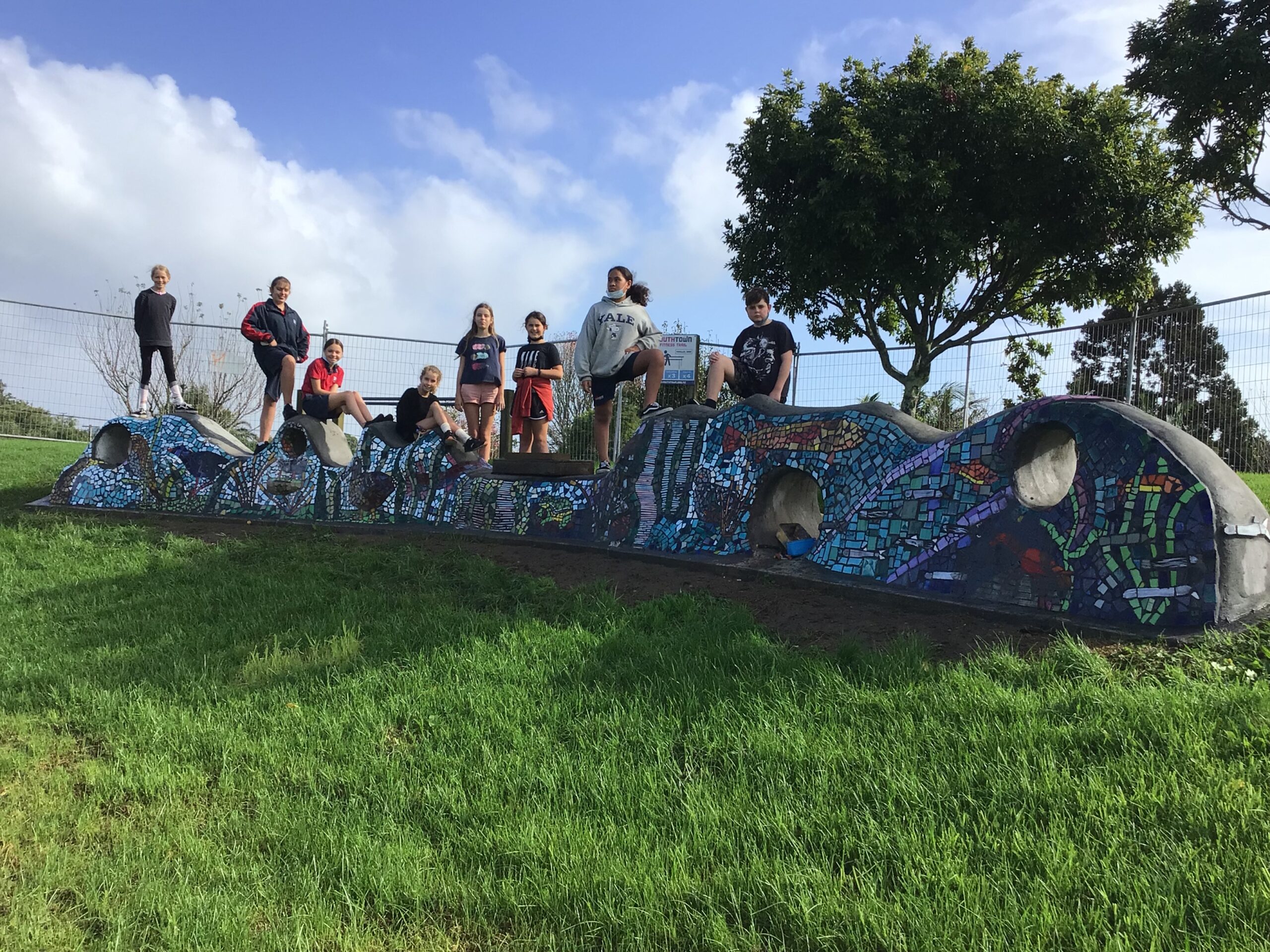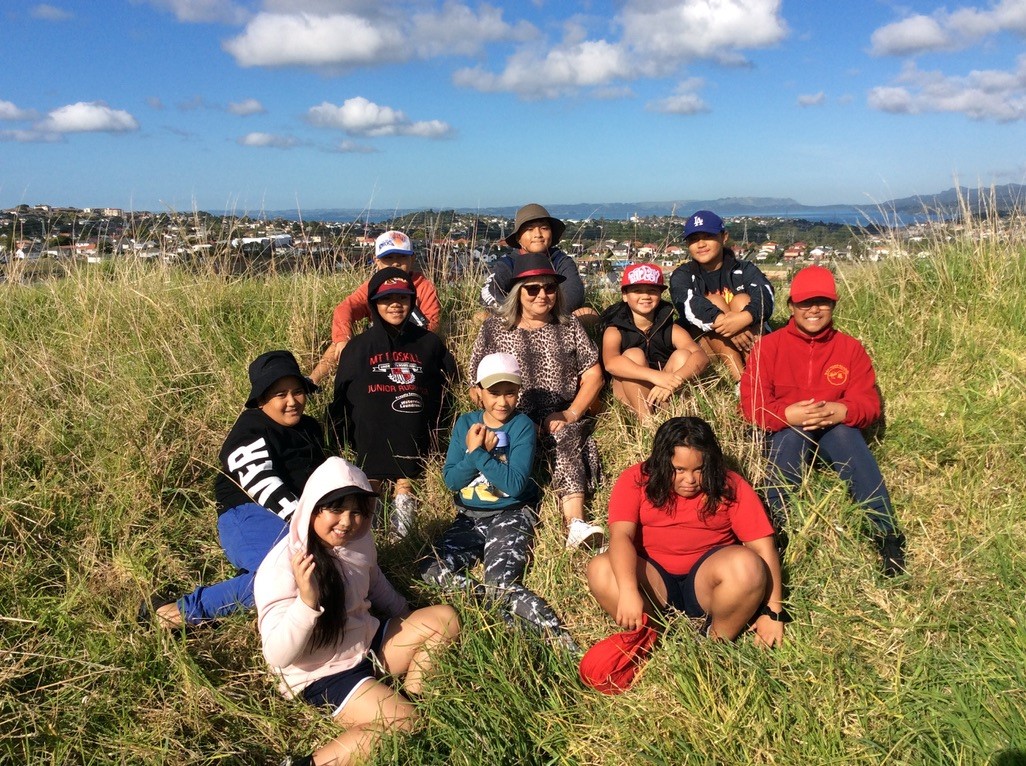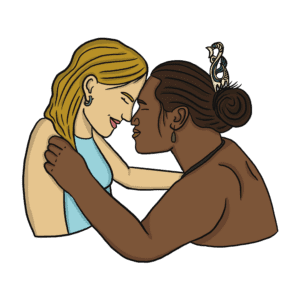

Balmoral school remembers te Roto a Rangi
At Balmoral School in Mount Eden, an art project is opening the door to a deeper exploration of history.
The school is strongly inquiry-based and is reluctant to “silo” learning. Technology, science, literacy, maths as well as history have been involved in creating the mosaic wall. It displays the creatures, plants and fish that would have lived in the lake where the playing field now is.
“It’s a reminder of the past, the place we are now, and that we are kaitiaki of it.”
Every class in the school has had a part to play: from researching wetland environments, to choosing which creatures to focus on, to drawing and prototyping the creatures, to designing the wall, and constructing the mosaics.
“A successful provocation like this absolutely engages children in learning,” says teacher Saffron Paddy, who’s helped oversee the project. With the wall very nearly complete, she says the children feel they are leaving something behind for future generations. “It’s a reminder of the past, the place we are now, and that we are kaitiaki of it.”
Paddy says the skill of the teacher is in knowing the curriculum well – and to then identify the rich lessons that can come from the things the children are interested in. “One inquiry, which started with the provocation of the lake, ended up with us building life-size models of moa and Haast’s eagle in our class. We were able to do lots of maths and measurement in a very authentic way. And of course the children loved it.”
When the school had the opportunity to do the art project, the intention was to connect to the history of the school and the land on which it’s situated. “The lake that was on the school field was originally called Te Roto a Rangi, after Rangihuamoa, a tipuna from the Waiohua iwi. However, we didn’t feel that was our story to tell. So we peeled it back to the actual land and the creatures that would have been here.”
The lake is a central part of the school’s identity and has been the provocation for many inquiries, including geology, water, waka, moa, wetlands, early Māori life and local history, says Paddy. “When it rains heavily the lake returns and the children see what it would have been like, giving them a sense of living history.”
Balmoral’s art project benefited from the Creatives in Schools scheme, where an artist is funded to work with children and teachers.
Balmoral School had the idea for the wall and artist Sarah Yates helped bring it into being, facilitating and guiding the research, creativity and construction. “A lot of the work was getting children to let go of normal art practice – they’d say, ‘I made this beautiful artwork, this is my artwork and I’m going to put my name on it.’
“So I drew an area for them and they had to fill in that part of the wall, then I got them to cut up their walls and join up their walls with other people’s, and then eventually they came up with their own wall prototypes.

“It was really cool watching how they went from being precious about their artworks to being okay with destroying things and trying again. By the end they were happy that if tiles weren’t in the right place on the wall, they’d smash them off and stick something else on and it was totally ok – that’s just part of the process.”
May Road School’s archaeological discoveries
“It’s exciting learning,” says deputy principal Beth Noakes, talking about the historical discoveries that tamariki at May Road School have made.
The learning stems from the school’s strategic plan and local curriculum “where we made the commitment that our children would know where they came from,” she says.

Over the following three years, a remarkable trove of knowledge has been unearthed. A major development project around Pukewīwī Mount Roskill brought an archaeologist into the area, and the school quickly formed a relationship with Hans-Dieter Bader.
He took a group of children up Pukewīwī, to look at the kūmara pits and other formations. “You get quite a good view up there,” says Noakes.
When the class was discussing what they’d learnt, one of the children asked, “Where did they bury people?”
Bader then sought information from the New Zealand Archaeological Association, which holds publicly available site information for areas all around New Zealand. The May Road site records showed that a dig in the 1930s found adzes, sharpening stones, stone pounders, obsidian, moa gizzard stones and a skeleton in a sitting position.
“It’s not just about Māori or Pākehā, it’s knowing the shared history and, I suppose, that everyone’s a migrant.”
From there, a connection was made with the local iwi Te Ākitai Waiohua, who lived in the area from about 1450 to 1750. The children discovered the local land was mainly used for gardens, rather than being a pā. By delving into the school’s pepeha, and connecting with the iwi, they learnt too that the school’s pepeha was missing a vital detail – that the story of Waiohua coming from Hawaiki involved a rangatira called Hape who came not on a waka, but on a stingray called Kaiwhare. Kaiwhare is now the guardian of the Manukau Harbour.
“The kids were totally into that, and last year spent a lot of time getting very excited about Kaiwhare,” says Noakes. So much so that one group has named their new relocatable classroom Kaiwhare.
Leading on from these investigations, the whole school is this year exploring the theme of navigation. “It’s going in all sorts of different directions,” says Noakes. “It’s not just about Māori or Pākehā, it’s knowing the shared history and, I suppose, that everyone’s a migrant.”
Senior team leader and teacher Meryl Ulugia-Pua sees first-hand the enthusiasm for historical learning. “The children are making all sorts of connections. They learnt about Hape, and they made the connection to Karangahape Road – and then to Ihumato in Mangere, the hill where Hape could see most of Manukau Harbour. They see something on the news, and they ask, ‘Is that related to …’ and it’ll be something we’ve been learning about.”
She says the children have become little researchers and detectives as they seek evidence within texts. “They’re on Google maps, using mapping skills to trace the navigational journey of a group of people from Hawaiki to Aotearoa. They imagine themselves in Hawaiki as one of the people preparing to leave – thinking deeply to explore what resources they will need before setting off on the long voyage. Students will find more information and they will delve deeper to make connections to other texts they have read, and to the world around them.”
Altogether, inquiry-based learning in an historical context takes learners to another level of interest and discovery, she says, and it motivates children to use their “learning powers”. These are: resilience (asking for example, “How does this character show resilience?”), problem-solving, communication, collaboration, critical thinking, curiosity and making connections.
Related Posts

Aotearoa New Zealand’s histories – a healing curriculum
Two years since it was made compulsory in schools, Heeni Collins (Ngāti Raukawa, Ngāti Haumia) finds out about the positive impacts of Aotearoa New Zealand’s histories curriculum on teachers and students, and the barriers they still face to implementing it.

Te Pūherenga: Preserving pūrākau for future generations
In 2022, Ngāti Rēhia began a partnership with local schools in Kerikeri to incorporate its pūrākau and mātauranga into Aotearoa New Zealand’s histories curriculum. Ako Zoomed in to Kerikeri to hear from Riverview Primary School teacher Samantha Roessler and Ngāti Rēhia Matua Taua Kemp about the significance of this collaboration for their students and community.

Building relationships with iwi – a regional and a national initiative
While eight tangata whenua iwi in the top of the South Island came together recently to improve outcomes for tamariki in education; another initiative has provided support for a growing number of principals and schools throughout several regions to connect with hapū and iwi since 2013.

Nō hea koe? Where are you from?
Many schools and ECE centres already use Aotearoa histories as a powerful tool to engage tamariki in learning. Personal stories of migration are at the heart of it.